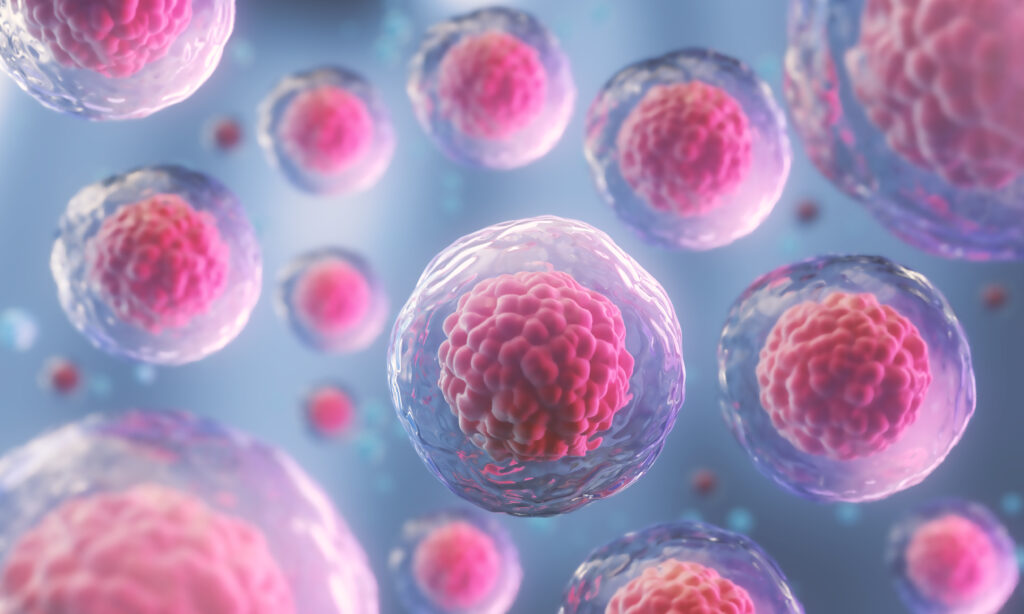Fact Sheet: Adult Stem Cell Research and Transplants
To view as PDF, see: CLI Fact Sheet Adult Stem Cell Research and Transplants
Last updated: November 21, 2017
Adult stem cell transplants are already widely used to the benefit of over a million people.
- Well over 1 million patients worldwide have been treated with adult stem cells and experienced improved health, based on data gathered by December 2012.[i]
- Nearly 70,000 adult stem cell transplants were performed worldwide in 2012 alone.[ii]
- Nearly 20,000 adult stem cell transplants were performed in the United States in 2014 alone.[iii]
- More than 30,000 umbilical cord blood transplants in patients were performed by 2013.[iv]
- Patients in 75 countries worldwide had undergone adult stem cell transplants by 2012.[v]
Adult stem cell transplants are being used to treat dozens of conditions in patients.
- There are nearly 3,500 ongoing or completed clinical trials (in patients) using adult stem cells, as listed in the National Institutes of Health/FDA-approved database.[vi]
- Already by 2007, there were at least 73 conditions that were being treated by adult stem cell transplants.
- Peer-reviewed, scientific publications have documented therapeutic success using adult stem cells in clinical trials for dozens of conditions, including, for example: heart damage[vii], stroke[viii], sickle cell anemia[ix], spinal cord injury[x], multiple sclerosis[xi], juvenile diabetes[xii], retinal/optic nerve disease[xiii], and systemic lupus[xiv].
- For many conditions, including multiple myeloma and leukemias, adult stem cell transplants have moved beyond clinical trials to become standard medical practice for these patients.
- For patients with multiple myeloma: More than 30,000 bone marrow and umbilical cord blood transplants were done from 2010 to 2014 in the United States.[xv]
- “HSCT (also known as blood and bone marrow transplant) is most often used to treat diseases of the blood and several types of cancer such as multiple myeloma or leukemia. For many people with these diseases, the only possibility of a cure is to have a HSCT.”[xvi]
- In contrast to adult stem cells, there is currently no validated, successful patient treatment due to embryonic stem cells despite funding and research spanning a decade and a half.
[i] Gratwohl A et al., One million haematopoietic stem-cell transplants: a retrospective observational study, Lancet Haematology 2, e91-e100, March 2015. doi:10.1016/S2352-3026(15)00028-9.
[ii]Niederwieser D, Baldomero H, Szer J, Gratwohl M, et al., Hematopoietic stem cell transplantation activity worldwide in 2012 and a SWOT analysis of the Worldwide Network for Blood and Marrow Transplantation Group including the global survey. Bone Marrow Transplant. 51(6):778-785, 2016. doi:10.1038/bmt.2016.18.
[iii] General FAQ. U.S. Department of Health and Human Services, Health Resources and Services Administration. http://bloodcell.transplant.hrsa.gov/about/general_faqs/index.html, accessed August 3, 2016.
[iv] Ballen KK, Gluckman E, Broxmeyer HE, Umbilical cord blood transplantation: the first 25 years and beyond, Blood. 122:491-498, 2013. doi:10.1182/blood-2013-02-453175.
[v] Gratwohl A et al., One million haematopoietic stem-cell transplants: a retrospective observational study, Lancet Haematology 2, e91-e100, March 2015. doi:10.1016/S2352-3026(15)00028-9.
[vi] Search term: http://www.clinicaltrials.gov/ct2/results?term=adult+stem+cell+transplants&type=Intr, accessed August 2, 2016.
[vii] Patel AN et al., Ixmyelocel-T for patients with ischaemic heart failure: a prospective randomised double-blind trial. Lancet 387:2412-2421, 2016. doi: 10.1016/S0140-6736(16)30137-4.
[viii] Steinberg GK, Kondziolka D, Wechsker LR et al., Clinical Outcomes of Transplanted Modified Bone Marrow–Derived Mesenchymal Stem Cells in Stroke: A Phase 1/2a Study. Stroke. 447: 1817-1824, 2016. doi: 10.1161/STROKEAHA.116.012995; Cox CS, Hetz RA, Liao GP, et al., Treatment of Severe Adult Traumatic Brain Injury Using Bone Marrow Mononuclear Cells. Stem Cells. 35:1065-1079, 2017. doi: 10.1002/stem.2538; Hess, DC et al., Safety and Efficacy of Multipotent Adult Progenitor Cells in Acute Ischaemic Stroke (MASTERS): A Randomised, Double-Blind, Placebo-Controlled, Phase 2 Trials. Lancet. 16 (5):360-368, 2017. doi: 10.1016/S1474-4422(17)30046-7; Savitz SI, Misra V, Kasam M, et al., Intravenous Autologous Bone Marrow Mononuclear Cells for Ischemic Stroke. Annals of Neurology. 70:59-69, 2011. doi: 10.1002/ana.22458.
[ix]See Bernaudin F et al., Long-term results of related myeloablative stem-cell transplantation to cure sickle cell disease. Blood. 110:2749-2756,2007. doi: 10.1182/blood-2007-03-079665. “Hematopoietic stem cell transplantation (HSCT) is the only curative therapy for sickle cell disease.”
[x] Lima C, Pratas-Vital J, Escada P, Hasse-Ferreira A, Capucho C, Peduzzi JD. Olfactory Mucosal Autografts and Rehabilitation for Chronic Traumatic Spinal Cord Injury. Neurorehabil Neural Repair January 24:10-22, 2010. doi: 10.1177/1545968309347685; Lima C, Pratas-Vital J, Escada P, Hasse-Ferreira A, Capucho C, Peduzzi JD. Olfactory Mucosa Autografts in Human Spinal Cord Injury: A Pilot Clinical Study. The Journal of Spinal Cord Medicine. 29(3):191-203, 2006.
[xi] Burt RK et al., Association of Nonmyeloablative Hematopoietic Stem Cell Transplantation With Neurological Disability in Patients With Relapsing-Remitting Multiple Sclerosis, JAMA. 313(3):275-284, 2015. doi: 10.1001/jama.2014.17986.
[xii] Cai J et al., Umbilical Cord Mesenchymal Stromal Cell With Autologous Bone Marrow Cell Transplantation in Established Type 1 Diabetes: A Pilot Randomized Controlled Open-Label Clinical Study to Assess Safety and Impact on Insulin Secretion, Diabetes Care. 39, 149, 2016. doi: 10.2337/dc15-0171; Gaipov, A et al., Autologous Bone-Marrow-Derived Stem Cells Transplantation in Type 1 Diabetes Mellitus. Nephrol. Dial. Transplant. 31 (suppl 1):i217, 2016. doi: 10.1093/ndt/gfw169.03; D’Addio F et al., Autologous Nonmyeloablative Hematopoietic Stem Cell Transplantation in New-Onset Type 1 Diabetes: A Multicenter Analysis, Diabetes. 63(9), 3041-3046, 2014. doi: 10.2337/db14-0295; Zhao et al., Reversal of type 1 diabetes via islet β cell regeneration following immune modulation by cord blood-derived multipotent stem cells. BMC Medicine. 10(3), 2012. doi: 10.1186/1741-7015-10-3; Voltarelli JC and Couri CEB, Stem cell transplantation for type 1 diabetes mellitus, Diabetology & Metabolic Syndrome 1, 4, 2009. doi: 10.1186/1758-5996-1-4; Couri CEB et al., C-Peptide Levels and Insulin Independence Following Autologous Nonmyeloablative Hematopoietic Stem Cell Transplantation in Newly Diagnosed Type 1 Diabetes Mellitus, JAMA 301, 1573-1579, 2009; Voltarelli JC et al., Autologous Nonmyeloablative Hematopoietic Stem Cell Transplantation in Newly Diagnosed Type 1 Diabetes Mellitus, JAMA. 297, 1568-1576, 2007.
[xiii] Weiss JN, Levy S, Malkin A. Stem Cell Ophthalmology Treatment Study (SCOTS) for retinal and optic nerve diseases: a preliminary report. Neural Regen Res 2015; 10:982-8; Weiss JN, Levy S, Benes SC. Stem Cell Ophthalmology Treatment Study (SCOTS) for retinal and optic nerve diseases: a case report of improvement in relapsing auto-immune optic neuropathy. Neural Regen Res 2015; 10:1507-15.
[xiv] Burt RK et al., Nonmyeloablative Hematopoietic Stem Cell Transplantation for Systemic Lupus Erythematosus, JAMA 295, 527-535, 2006, doi: 10.1001/jama.295.5.527; Illei GG et al., Current state and future directions of autologous hematopoietic stem cell transplantation in systemic lupus erythematosus, Annals of the Rheumatic Diseases 70, 2071-2074, 2011 doi: 10.1136/ard.2010.148049; Szodoray P et al., Immunological reconstitution after autologous stem cell transplantation in patients with refractory systemic autoimmune diseases, Scandinavian Journal of Rheumatology 41, 110-115, 2012, doi: 10.3109/03009742.2011.606788; Alchi B et al., Autologous haematopoietic stem cell transplantation for systemic lupus erythematosus: data from the European Group for Blood and Marrow Transplantation registry, Lupus 22, 245-253, 2013, doi: 10.1177/0961203312470729; Alexander T et al., Autologous hematopoietic stem cell transplantation in systemic lupus erythematosus, Z. Rheumatologie 75, 770-779, 2016, doi: 10.1007/s00393-016-0190-3
[xv]Search term selection: “multiple myeloma/plasma cell disease (PCD)” http://bloodcell.transplant.hrsa.gov/RESEARCH/Transplant_Data/US_Tx_Data/Data_by_Disease/national.aspx, accessed August 3, 2016.
[xvi] Press release: “The Lancet Hematology: Experts warn of stem cell underuse as transplants reach 1 million worldwide” (Feb 26, 2016) http://www.eurekalert.org/pub_releases/2015-02/tl-tlh022515.php, accessed August 2, 2016.






















